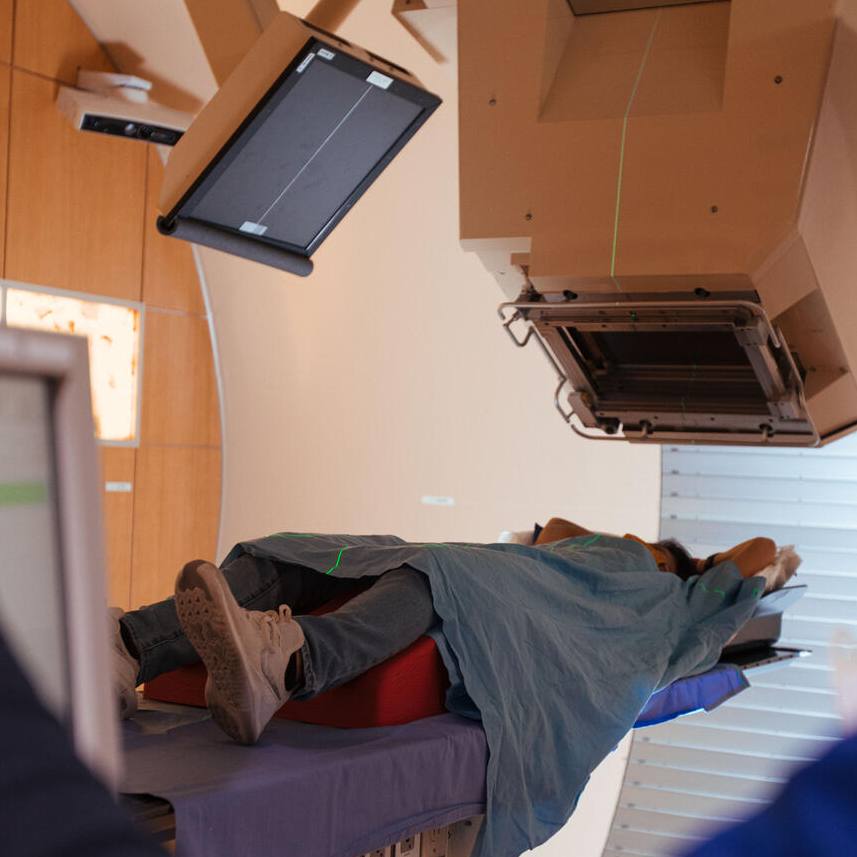 DEAR MAYO CLINIC: My father just started chemotherapy for lymphoma, and he is scheduled for a positron emission tomography or PET scan after his first three treatments. How do doctors decide when to perform a PET scan, and what’s the purpose of doing that scan during the treatment? Why wouldn’t the test be done before treatment started?
DEAR MAYO CLINIC: My father just started chemotherapy for lymphoma, and he is scheduled for a positron emission tomography or PET scan after his first three treatments. How do doctors decide when to perform a PET scan, and what’s the purpose of doing that scan during the treatment? Why wouldn’t the test be done before treatment started?
ANSWER: Lymphomas are cancers of the immune system. They are broadly classified into Hodgkin lymphoma and non-Hodgkin lymphoma. Each of those categories also has several different subtypes. PET scans are an important part of care planning and management for certain types of lymphoma. The scans can help determine cancer stage, treatment response and patient prognosis. They also help direct treatment changes.
PET scans are useful in assessing some, but not all, forms of lymphoma. Specifically, these imaging exams have been validated for use only in Hodgkin lymphoma and in several forms of the most common types of non-Hodgkin lymphoma.
In cases of lymphoma where PET scans are worthwhile, a scan typically is conducted before treatment begins to identify disease stage. In some situations, however — particularly when it’s a case of aggressive lymphoma — a sense of urgency may prompt the care team to start treatment before a PET scan can be performed, or when scheduling issues or other logistics make it unwise to wait for the scan.
The reason to perform an interim scan after three rounds of chemotherapy is to find out if the disease has gone into remission. If it has, the care team knows the treatment is working, and there is no need to change the ongoing plan. If the disease is not in remission, at that point, the treatment plan likely needs to change to combat the disease more effectively.
A PET scan is particularly well-suited to provide this information. Unlike other imaging technology, such as a CT scan or an MRI, a PET scan can definitively show if the lymphoma is still active because it reveals chemical activity within tissues and organs.
For example, a patient with Hodgkin lymphoma may have a mass develop as part of the disease. He or she can undergo chemotherapy that puts the disease into remission, but a portion of the mass that’s not cancerous might remain behind. A CT scan or an MRI would show the leftover mass but nothing else. Before PET scans were available, the only way to confirm that such a mass wasn’t active lymphoma was to perform a biopsy. Now if a PET scan shows no activity, but a lump is still there, it’s safe to assume the disease is in remission and the mass is benign, so a biopsy isn’t necessary.
The other benefit of performing an interim PET scan is that it gives the care team information about possible outcomes. Patients whose disease goes into remission after three rounds of chemotherapy are most likely to stay in remission the longest, and that provides valuable information to guide additional treatment.
Finally, when an interim PET scan shows that lymphoma is not in remission, and changes are made to the treatment plan accordingly, then another PET scan likely will be performed after two or three more chemotherapy rounds to monitor progress and see how well the new treatment is working. — Dr. Taimur Sher, Hematology/Oncology, Mayo Clinic, Jacksonville, Florida
****************************
Related Articles
- Heart failure more likely for some breast cancer and lymphoma survivors published 2/28/18
- Living With Cancer: Lymphoma treatment options published 2/23/18
- Increasing physical activity improves survival in lymphoma patients, Mayo researchers say published 12/12/17
- Living With Cancer: Understanding lymphoma published 9/8/17







